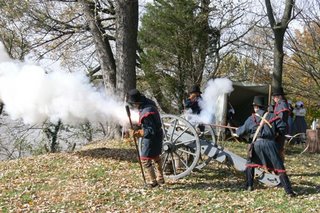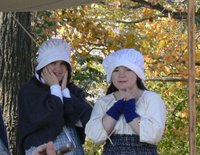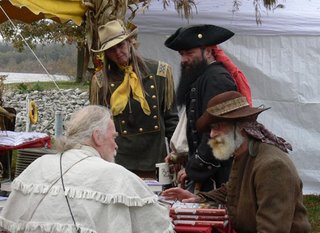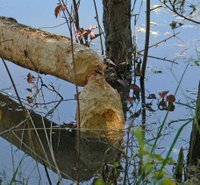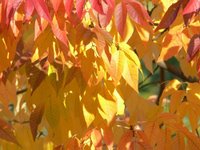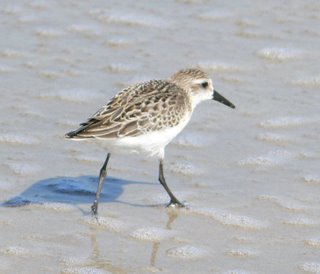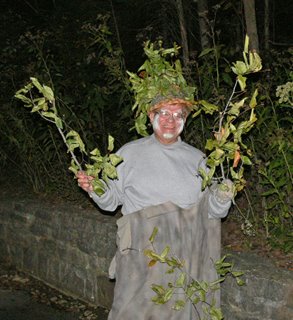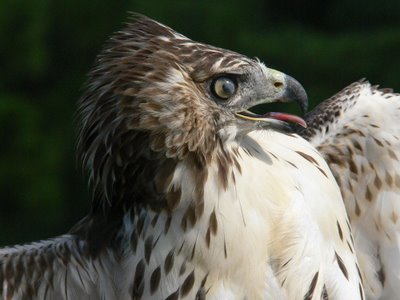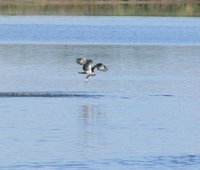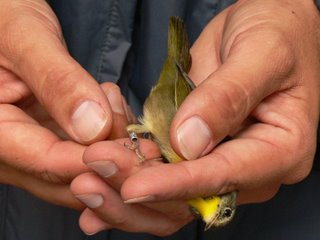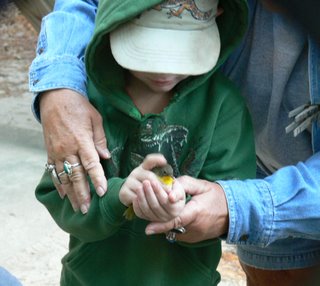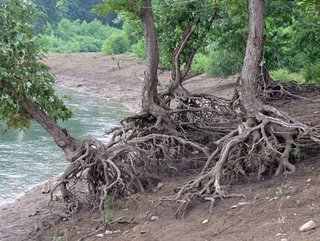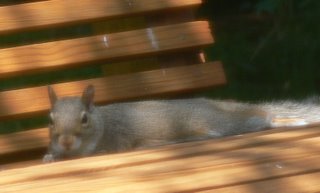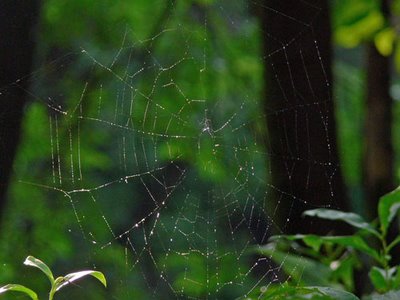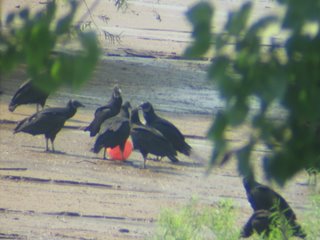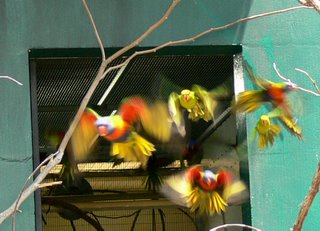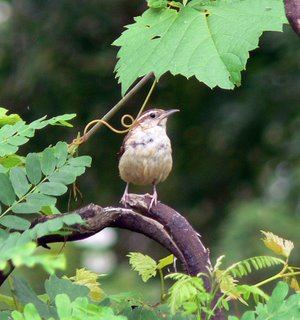
The birding has been so great all Spring and Summer, with my new camera, I had forgotten the joys of birding in the Autumn and Winter. The biggest joy is that the leaves are gone and I can see the birds a lot easier! I've been searching online for a site that lists the birds that winter over in this area, to see who I am forgetting, or otherwise not recognizing, but haven't found much yet. The biggest problem is that it stays dark so much longer, Saturdays and Sundays are going the be the only time to watch the birds.
While raking leaves today, we got all the feeders refilled. I even took the screen off the kitchen window so I can use the binoculars and camera from inside without the screen making every photo look fuzzy. Some will still be fuzzy, of course, when my hand shakes, but why start with one strike against you?
As the Summer closed, I noticed that the birds no longer sang so early and so loud in the morning. As I walked to the bus before 7:00 am, it was dark, and I heard no birds at all. Since the change to Eastern Standard Time and more light in the morning, I hear more birds during the walk to the bus stop. My faithful Carolina Wrens sing and scold as I walk down the street. This Wren photo was obviously taken in the Summer, but it's the best one I have and I wanted to show it off.
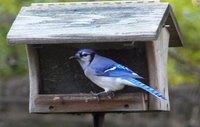
Blue Jays were not in my backyard all Summer, but I saw quite a few this afternoon. I never noticed Jays migrating before, but they all seemed to heading South as we returned from Virginia. I wonder how long these will stick around.
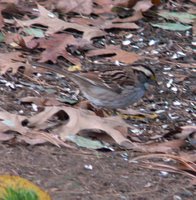
The White Throated Sparrow blends perfectly with the leaves under the feeder both due to his coloration and the close resemblance to a House Sparrow if you don't look closely. It was good to hear him calling for Sam Peabody again.

Of course, the Dark Eyed Juncos have moved in for the winter. They are also camouflaged in the leaves. I hope to get some of the classic photos of the Northern Cardinal in the snow at my feeder. Maybe Santa will even bring me some feeders that don't have squirrel teeth marks on them!
 Winter arrived with a vengeance last week, when the temperature dropped by some
Winter arrived with a vengeance last week, when the temperature dropped by some  35 degrees overnight in the midst of high winds and rain. On Saturday, however, the sun came out and we decided to enjoy the spate of sunshine at Salato Wildlife Education Center. Salato is the headquarters for Kentucky's Department of Fish and Wildlife, with wonderful exhibits of Kentucky wildlife, including live white tail deer, elk, bison, turkeys, black bears, wildcats, and two Bald Eagles. The two fishing lakes attract a variety of water fowl as well.
35 degrees overnight in the midst of high winds and rain. On Saturday, however, the sun came out and we decided to enjoy the spate of sunshine at Salato Wildlife Education Center. Salato is the headquarters for Kentucky's Department of Fish and Wildlife, with wonderful exhibits of Kentucky wildlife, including live white tail deer, elk, bison, turkeys, black bears, wildcats, and two Bald Eagles. The two fishing lakes attract a variety of water fowl as well.
 Some small birds posed for their pictures against the bright blue sky, enjoying the clear weather too. This little Song Sparrow patiently sat on a branch while I took several pictures in the classic "bird on a stick" setting. The Blue Jays were out in force, darting from tree to tree. One was high on a bare branch and we weren't too sure what it was, since we failed to bring binoculars (we won't do that again), and could see only the gray belly. The long lens on my camera seemed to hint at black markings on the face that made me think it really was a Blue Jay after all. As always, click on any picture to see a larger version.
Some small birds posed for their pictures against the bright blue sky, enjoying the clear weather too. This little Song Sparrow patiently sat on a branch while I took several pictures in the classic "bird on a stick" setting. The Blue Jays were out in force, darting from tree to tree. One was high on a bare branch and we weren't too sure what it was, since we failed to bring binoculars (we won't do that again), and could see only the gray belly. The long lens on my camera seemed to hint at black markings on the face that made me think it really was a Blue Jay after all. As always, click on any picture to see a larger version.
 Bluebirds are relatively new to me, so it's always a thrill to find one. I'm glad to add them to my list of birds who stay around during the winter. At first the flash of blue wings looked like an Indigo Bunting. Then he posed on a rail and we clearly saw it was a bluebird. I got brave with Photoshop too and used the cloning tool for the first time to eliminate a small branch that couldn't be cropped out.
Bluebirds are relatively new to me, so it's always a thrill to find one. I'm glad to add them to my list of birds who stay around during the winter. At first the flash of blue wings looked like an Indigo Bunting. Then he posed on a rail and we clearly saw it was a bluebird. I got brave with Photoshop too and used the cloning tool for the first time to eliminate a small branch that couldn't be cropped out. The Red-bellied Woodpeckers were making chips fly from the trees in their noisy hunt for bugs, but it is a challenge to get more than their bellies when you are standing on the ground directly under them. This one doesn't seem to have much "red' on the belly. I'll have to look up the females and see if they are paler than the males.
The Red-bellied Woodpeckers were making chips fly from the trees in their noisy hunt for bugs, but it is a challenge to get more than their bellies when you are standing on the ground directly under them. This one doesn't seem to have much "red' on the belly. I'll have to look up the females and see if they are paler than the males.  On the fishing lake, we saw a few ducks, and the males all had their breeding plumage. The last ducks I looked at in July were in eclipse, and very dull looking. This time the male Mallards had bright green heads. We saw a male Black Duck, and there was no risk at all of mistaking him for a female mallard. But we were most excited to see a male Wood Duck looking like a little lure painted in vivid colors to draw in the wild birds for duck hunters. They all followed us as we walked around the lake, and I was amazed at how fast they can swim!
Inside the educational center are aquariums, and stuffed animals and birds on display, with samples of the various skins to be touched and identified. The main hallway has displays of hawks and other birds in flight, which most people probably didn't notice. After studying all the hawk books since September, I did pretty well at identifying them, especially since they just hung there unmoving. Talk about shooting fish in a barrel! After making my guesses, we found the printed guide identifying each of the birds, and I was encouraged to get so many of them right. Salato is well worth a visit next time you get a chance. I look forward to returning in Spring when the flowers start to bloom.
On the fishing lake, we saw a few ducks, and the males all had their breeding plumage. The last ducks I looked at in July were in eclipse, and very dull looking. This time the male Mallards had bright green heads. We saw a male Black Duck, and there was no risk at all of mistaking him for a female mallard. But we were most excited to see a male Wood Duck looking like a little lure painted in vivid colors to draw in the wild birds for duck hunters. They all followed us as we walked around the lake, and I was amazed at how fast they can swim!
Inside the educational center are aquariums, and stuffed animals and birds on display, with samples of the various skins to be touched and identified. The main hallway has displays of hawks and other birds in flight, which most people probably didn't notice. After studying all the hawk books since September, I did pretty well at identifying them, especially since they just hung there unmoving. Talk about shooting fish in a barrel! After making my guesses, we found the printed guide identifying each of the birds, and I was encouraged to get so many of them right. Salato is well worth a visit next time you get a chance. I look forward to returning in Spring when the flowers start to bloom.



